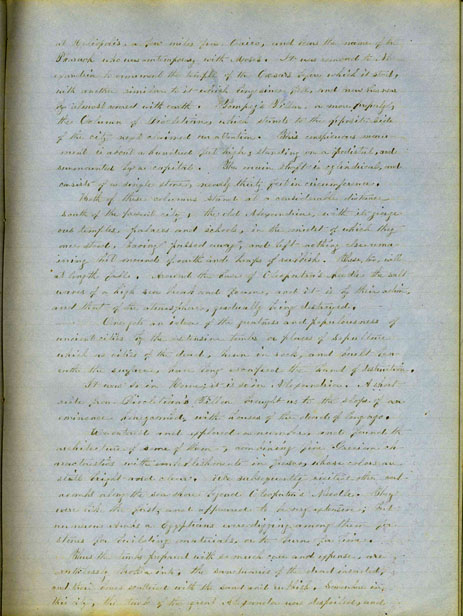Travel
Diary of Mrs. R.P. Eaton:
Europe,
Egypt, and Palestine, ca. 1857

Both of these columns stand at a considerable distance south of the present city, the old Alexandria, with its gorgeous temples, palaces, and schools, in the midst of which they once stood, having passed away, and left nothing else remaining but mounds of earth and heaps of rubbish. These, too, will at length fall. Around the base of the Cleopatra’s Needle the salt waves of a high sea break and foam, and it is by their action, and that of the atmosphere, gradually being destroyed.
One gets an idea of the greatness and populousness of ancient cities by the extensive tombs or places of sculpture which as cities of the dead, hewn in rock, and built beneath the surface, have long escaped the hand of destruction.
It was so in Rome, it is so in Alexandria. A short ride from Diocletian’s Pillar brought us to the slope of an eminence honeycombed with houses of the dead of long ago.
We entered and explored a number, and found the architecture of some of them, combining fine Grecian characteristics with embellishments in fresco, whose colors are still bright and clear. We subsequently visited other catacombs along the seas-shore beyond Cleopatra’s Needle. They were like the first, and appeared to be very extensive; but numerous Arabs or Egyptians were digging among them for stones for building materials, or to burn for fire.
Thus the tombs prepared with so much care and expense are ruthlessly broken into, the sanctuaries of the dead imbedded, and their bones scattered with the sand and rubbish. Somewhere in the city, the tomb of the great Alexandria was despoiled, and